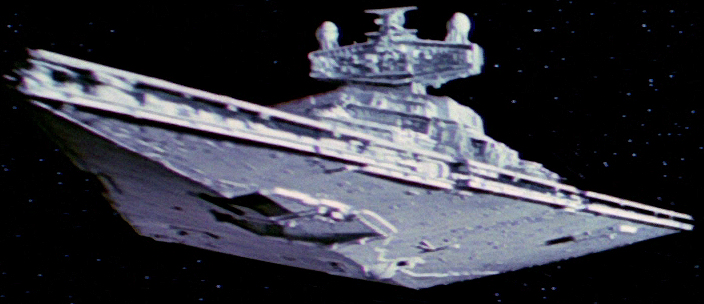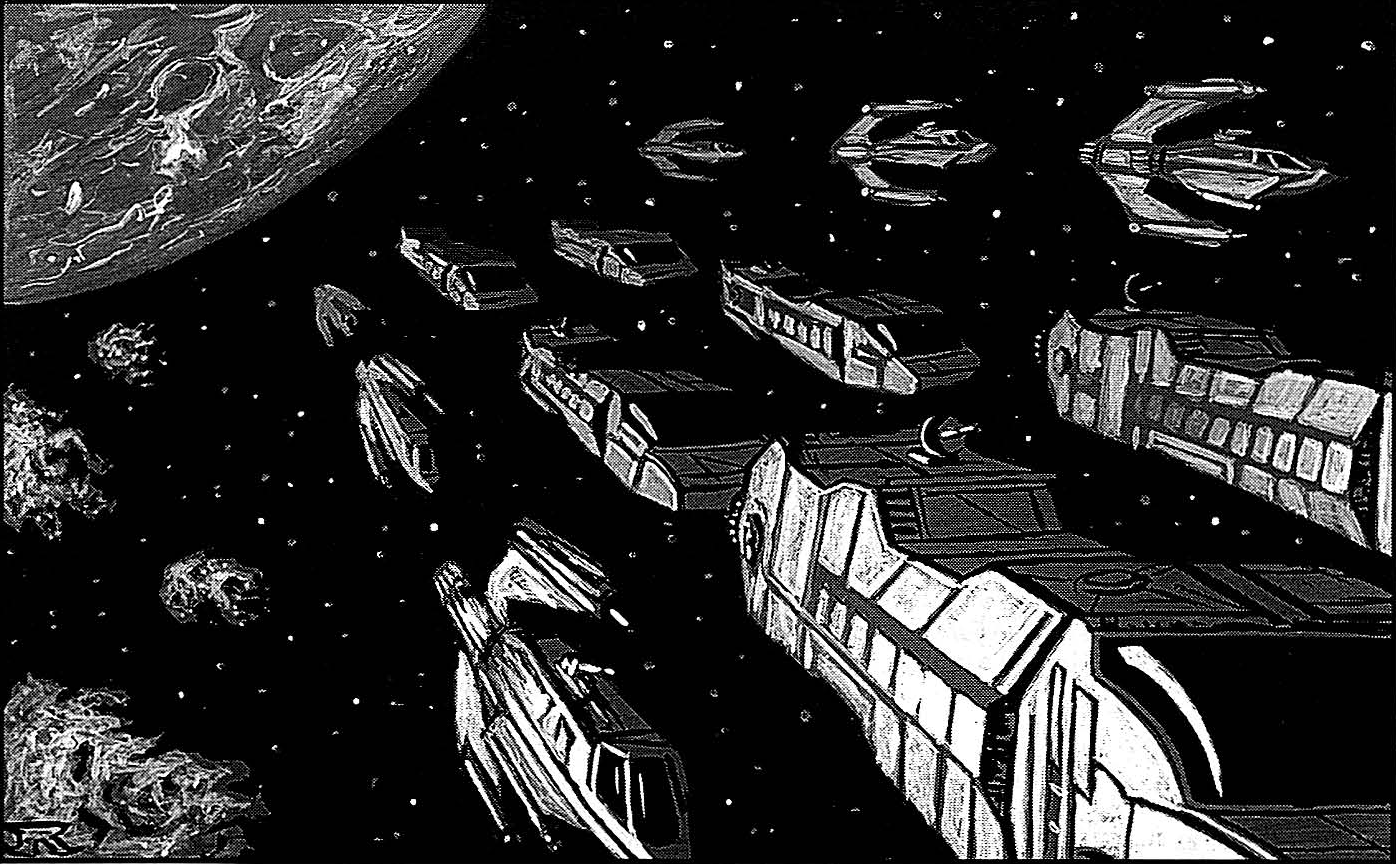A line of battle, which can also be referred to as a battle line or simply a line, represented a specific organizational structure for capital ships operating within a fleet. It typically served as the immediate grouping above an individual starship and below the larger squadron.
During the era of the Clone Wars, a grouping known as a section was the organizational level directly above a single ship. Sections were under the command of the most experienced ship captain present, unless a Jedi Commander was present.
A section was designated as a line specifically when it comprised larger and more heavily armed vessels, often referred to as ships of the line. These lines were typically structured into groups consisting of 3 to 4 ships.
Flotillas were made up of smaller vessels, such as corvettes or patrol craft, and were deployed in sections ranging from 6 to 12 ships.

Within the Galactic Empire, the Imperial Navy employed several distinct types of lines, each designed for specific operational requirements. While each line was nominally composed of four ships, the actual number often varied. Around 3 ABY, lines adhering to the four-ship composition constituted approximately seven percent of the Imperial Navy. A line typically consisted of 1 to 20 ships, under the command of a Captain of the Line.
An attack line was formed by either six light cruisers and frigates or three heavy cruisers. Its primary role was to engage enemy capital ships of comparable size or to divert enemy fire away from Star Destroyer units.
A heavy attack line was composed of four to eight vessels, with no ship smaller than a light cruiser, and occasionally included a Victory-class Star Destroyer. In combat scenarios, this type of line was capable of engaging an equal number of enemy capital ships and could operate independently from centralized command structures.
Pursuit lines consisted of light cruisers, sometimes supplemented by corvettes and frigates, operating in groups of 4 to 10 ships. In battle, pursuit lines were tasked with engaging retreating enemy ships and tracking them back to their bases. A common tactic employed by these lines was Beambaiting.
A recon line typically comprised two or four ships, often light cruisers equipped with enhanced sublight speed capabilities and improved Hyperwave signal interceptors. These ships operated independently or in pairs, with the mission of locating Rebel bases. Recon lines were frequently deployed into enemy territory to actively search for hostile bases and fleets. However, their primary objective was not to engage the enemy directly, but rather to retreat and report their findings.

Skirmish lines were designed to engage enemy capital ships or starfighters. While this role was later largely assumed by the increasing numbers of TIE fighters, these lines then served as cover and provided supporting fire for the fighters. Skirmish lines typically consisted of 4 to 20 ships, primarily corvettes, but could also include Skipray blastboats and frigates. These lines were sometimes utilized as convoy escorts.
The torpedo line was a specialized unit consisting of only two Torpedo Spheres and was employed for planetary bombardment operations.
A troop line was standardized with four ships: two Evakmar-KDY transport or Delta-class troop transports and two Strike-class medium cruisers. Due to the rigid organizational structure within the Imperial Army, this line type exhibited the highest degree of consistency within the Navy.
The Star Destroyer line was composed of a single Imperial-class Star Destroyer, or alternatively, a Super-class Star Destroyer. Early in the Navy's expansion, a study concluded that an Imperial-class Star Destroyer was equivalent in capability to a Squadron. However, to facilitate the acquisition of more Star Destroyers, the Admiralty reclassified the Star Destroyer as a line, as there were more lines authorized than squadrons.

Given the inherent nature of the Rebellion, maintaining a consistently organized fleet structure proved to be a significant challenge. The variations among individual sector forces were too substantial to allow for the establishment of a single, unified structure. Following the Mon Calamari's decision to join the Rebellion and contribute their Mon Calamari Star Cruisers, the newly appointed Supreme Commander, Admiral Gial Ackbar, established what were known as Roving Battle Lines.
A line typically consisted of 3 to 10 cruisers, supplemented by an unspecified number of escorts, close support vessels, and starfighters. These lines were highly mobile and engaged Imperial forces only when deemed necessary, often drawing resources from the local sector. When required, a line would temporarily disband to evade detection by the Empire. Command of a Battle Line was held by the most senior ship captain or a Line Admiral.
A battle line was further divided into several sub-elements, although these rarely operated independently:
The Cruiser element formed the core of the line and possessed the majority of its firepower. Their primary function was to engage enemy ships of comparable size.
The Close Support element consisted of frigates and corvettes and was responsible for protecting the cruisers from enemy close support vessels. While primarily defensive, these ships would also launch offensive maneuvers depending on the evolving battlefield situation.
Picket elements were composed of Fast-attack patrol ship and other picket ships, such as Light freighters. These units were tasked with detecting approaching enemy forces and initiating early engagements to force the enemy into a defined battle formation.
The Starfighter element fulfilled two distinct roles: Starfighter escort remained in close proximity to the capital ships, engaging attacking enemy fighters, while Attack Starfighters penetrated the enemy's close support line to target the cruisers directly.
- 14th Roving Line [9]
- Pegasus Strike Force [8]
- Task Force Starfall [10]
The fundamental organizational unit above a single ship within the New Republic's fleet structure was the task force. In terms of their composition, they bore similarities to the Roving Battle Lines of the Rebellion. A typical task force comprised a single Star Destroyer or Carrier serving as the flagship, two heavy cruisers, two transports or carriers, three frigates, and four gunships. The inclusion of additional support ships brought the average number of vessels in a task force to approximately 21. Command of a task force was typically held by a Commodore or an Admiral.
- Task Force Aleph [12]
- Task Force Apex [11]
- Task Force Aster [13]
- Task Force Bellbright [11]
- Task Force Blackvine [13]
- Task Force Copperleaf [11]
- Task Force Gemstone [11]
- Task Force Keyhole [11]
- Task Force Summer [11]
- Task Force Token [11]